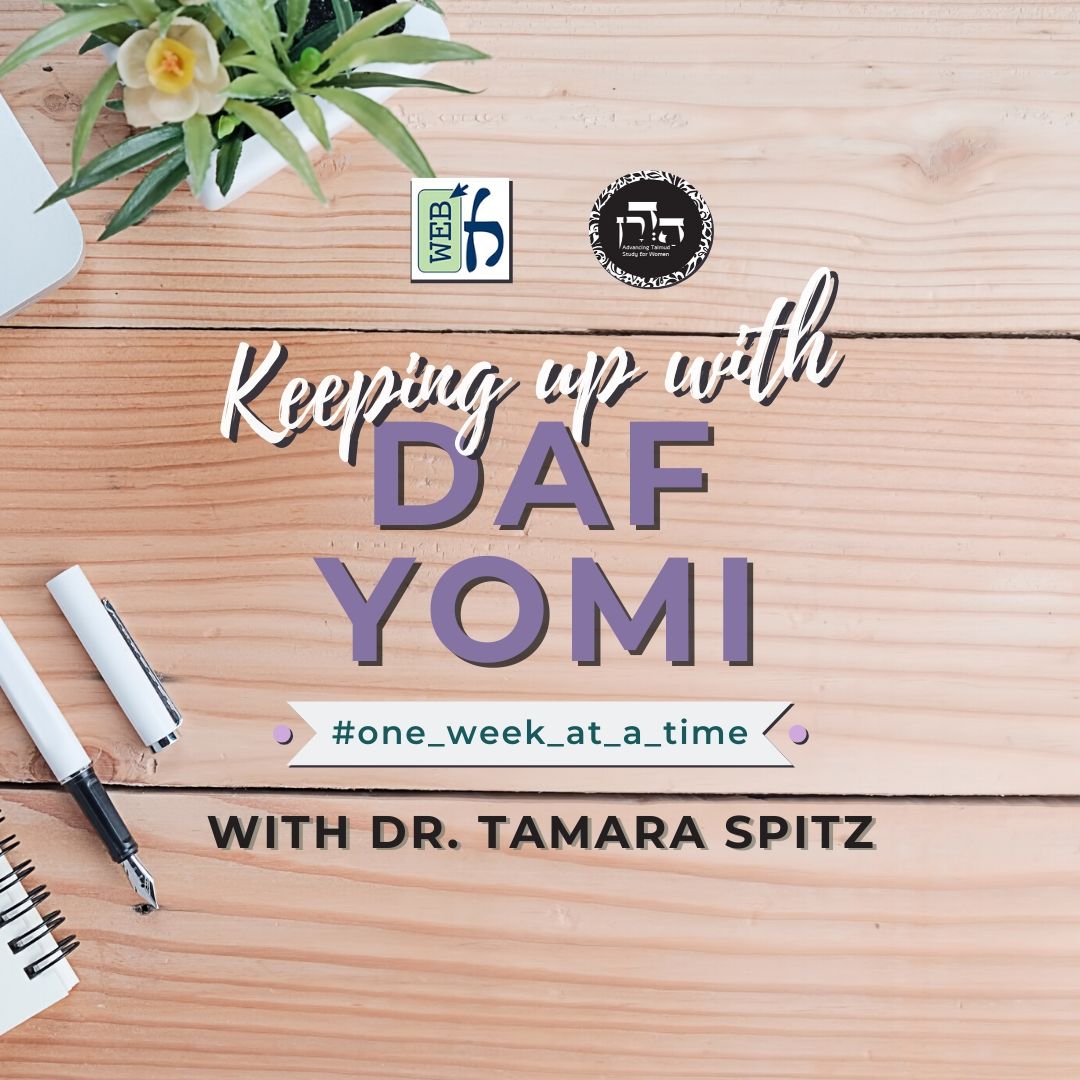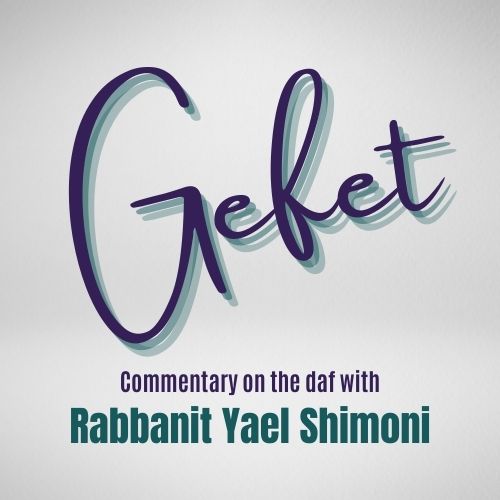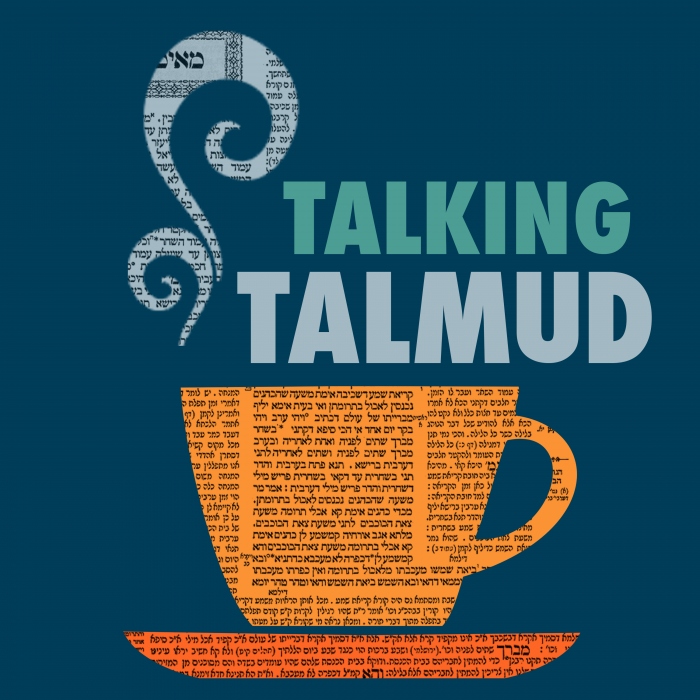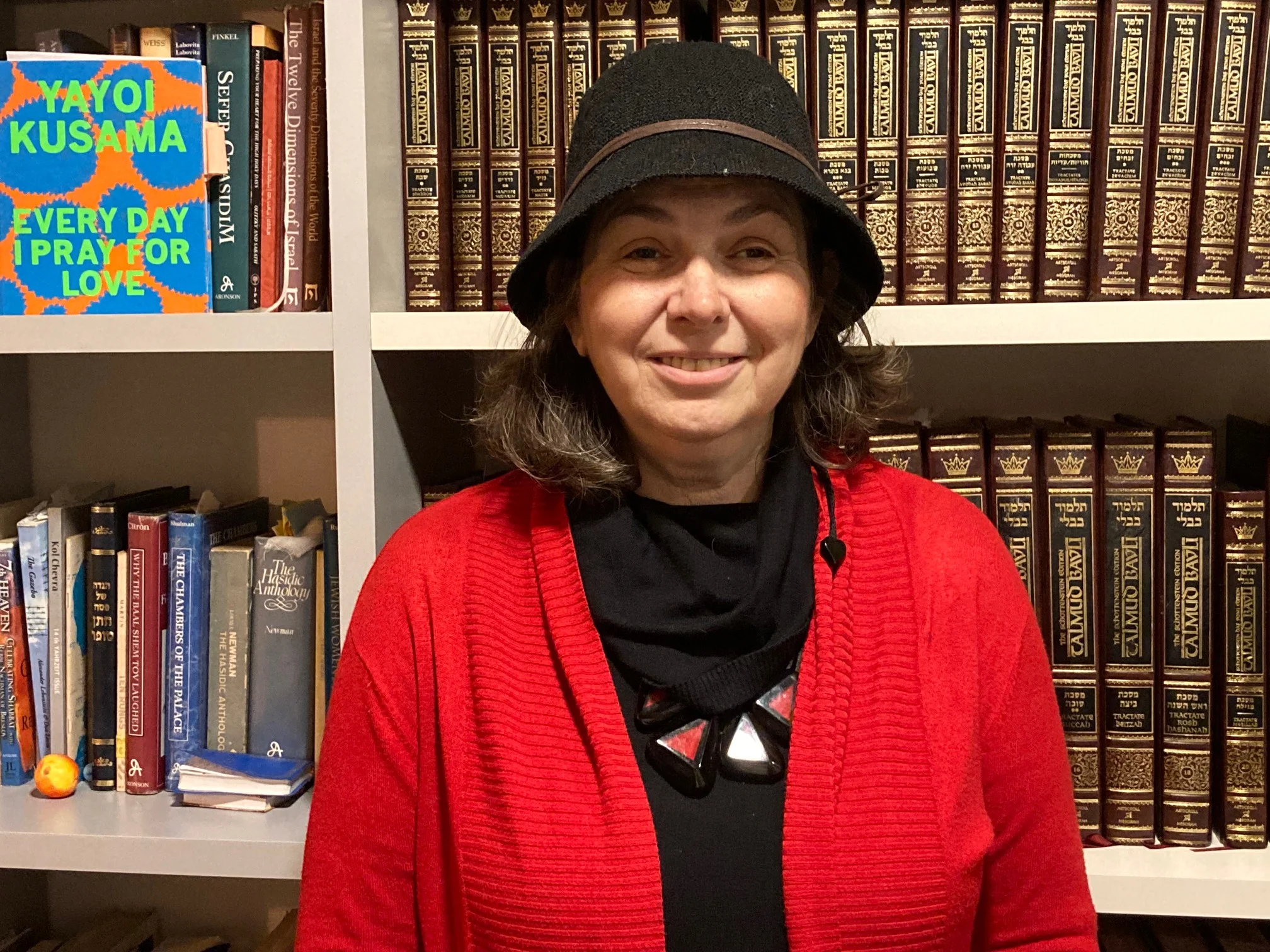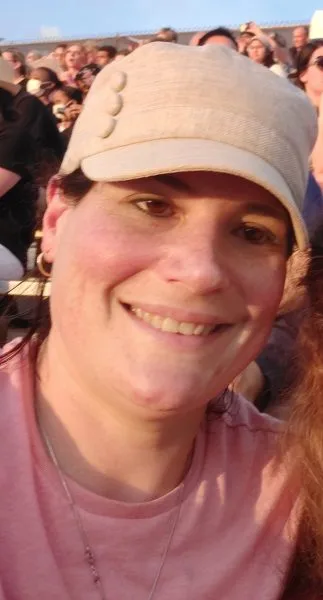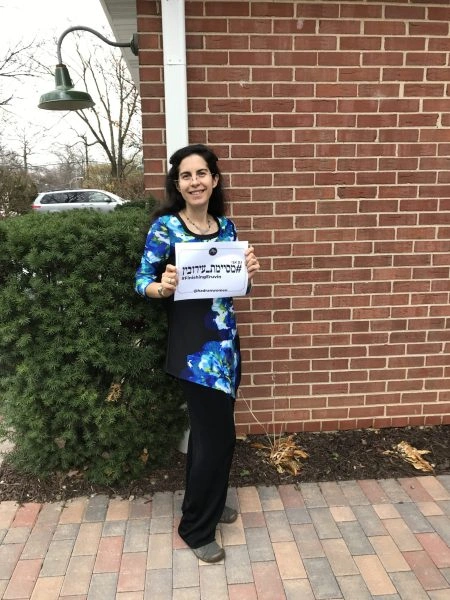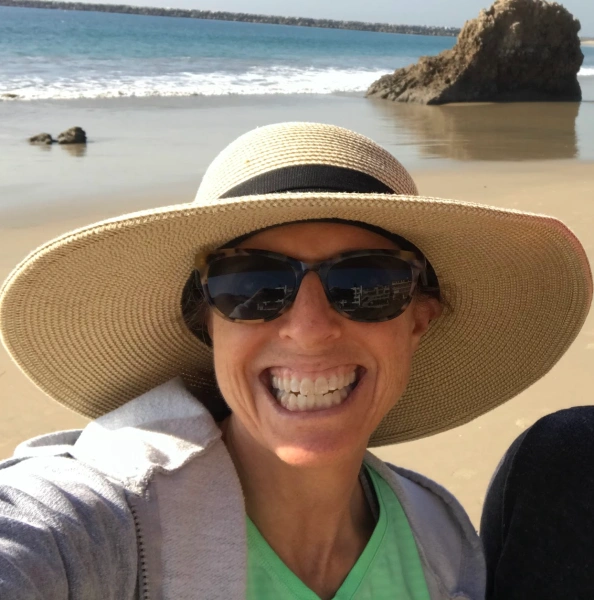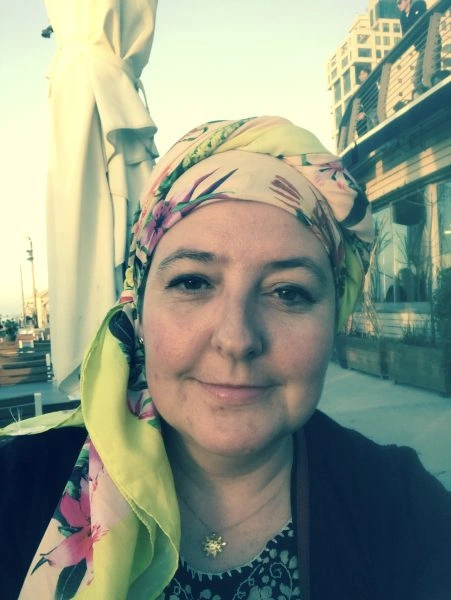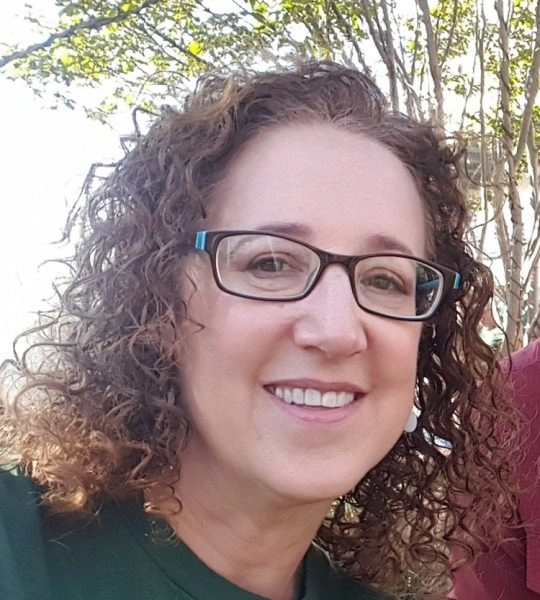Megillah 10
יֵשׁ אַחֲרֶיהָ הֶיתֵּר, וּקְדוּשַּׁת יְרוּשָׁלַיִם — אֵין אַחֲרֶיהָ הֶיתֵּר.
after the Tabernacle was destroyed, there is permission to sacrifice offerings on improvised altars. But with regard to the sanctity of Jerusalem, after the Temple was destroyed, there is no permission to sacrifice offerings on improvised altars, as the prohibition remains intact.
גְּמָ׳ אָמַר רַבִּי יִצְחָק: שָׁמַעְתִּי שֶׁמַּקְרִיבִין בְּבֵית חוֹנְיוֹ בִּזְמַן הַזֶּה. קָסָבַר: בֵּית חוֹנְיוֹ לָאו בֵּית עֲבוֹדָה זָרָה הִיא, וְקָא סָבַר: קְדוּשָּׁה רִאשׁוֹנָה — קִידְּשָׁה לִשְׁעָתָהּ וְלֹא קִידְּשָׁה לְעָתִיד לָבוֹא.
GEMARA: Rabbi Yitzḥak said: I heard that one sacrifices offerings in the temple of Onias in Egypt at the present time. The Gemara cites the basis for the statement of Rabbi Yitzḥak. He maintains that the temple of Onias is not a house of idol worship but rather a temple devoted to the service of God, and he maintains that the initial consecration sanctified Jerusalem for its time and did not sanctify Jerusalem forever. Therefore, after the destruction of the Temple, the sanctity of Jerusalem lapsed and the sacrifice of offerings elsewhere was no longer prohibited. For these reasons it was permitted to sacrifice offerings in the temple of Onias after the Temple was destroyed.
דִּכְתִיב: ״כִּי לֹא בָּאתֶם עַד עָתָּה אֶל הַמְּנוּחָה וְאֶל הַנַּחֲלָה״. ״מְנוּחָה״ — זוֹ שִׁילֹה, ״נַחֲלָה״ — זוֹ יְרוּשָׁלַיִם, מַקִּישׁ נַחֲלָה לִמְנוּחָה: מָה ״מְנוּחָה״ יֵשׁ אַחֲרֶיהָ הֶיתֵּר, אַף ״נַחֲלָה״ יֵשׁ אַחֲרֶיהָ הֶיתֵּר.
The Gemara cites the source of this halakha. It is as it is written: “For you are not as yet come to the rest and to the inheritance” (Deuteronomy 12:9), which is interpreted: “Rest,” this is Shiloh; “inheritance,” this is Jerusalem. The verse juxtaposes and likens inheritance to rest: Just as in the place of rest, Shiloh, after its destruction there is permission to sacrifice offerings on improvised altars, so too in the place of inheritance, Jerusalem, after its destruction there is permission to sacrifice offerings on improvised altars.
אֲמַרוּ לֵיהּ: אָמַרְתָּ? אֲמַר לְהוּ: לָא. אֲמַר רָבָא: הָאֱלֹהִים! אַמְרַהּ, וּגְמִירְנָא לַהּ מִינֵּיהּ.
The Gemara reports that the other Sages said to Rabbi Yitzḥak: Did you say this halakha with regard to the temple of Onias? He said to them: No, I did not say that. Rava said, reinforcing his assertion with an oath: By God! Rabbi Yitzḥak did in fact say this, and I myself learned it from him, but he later retracted this ruling.
וּמַאי טַעְמָא קָא הָדַר בֵּיהּ? מִשּׁוּם קֻשְׁיָא דְּרַב מָרִי. דְּמוֹתֵיב רַב מָרִי: קְדוּשַּׁת שִׁילֹה — יֵשׁ אַחֲרֶיהָ הֶיתֵּר. קְדוּשַּׁת יְרוּשָׁלַיִם — אֵין אַחֲרֶיהָ הֶיתֵּר. וְעוֹד תְּנַן: מִשֶּׁבָּאוּ לִירוּשָׁלַיִם נֶאֶסְרוּ הַבָּמוֹת, וְלֹא הָיָה לָהֶם עוֹד הֶיתֵּר, וְהִיא הָיְתָה נַחֲלָה.
The Gemara asks: And what is the reason he retracted his ruling? The Gemara explains: It is due to the difficulty raised by Rav Mari, as Rav Mari raised an objection from the mishna: With regard to the sanctity of Shiloh, after the Tabernacle was destroyed there is permission to sacrifice offerings on improvised altars. But with regard to the sanctity of Jerusalem, after the Temple was destroyed there is no permission to sacrifice offerings on improvised altars. And furthermore, we learned in a mishna (Zevaḥim 112b): Once they came to Jerusalem, improvised altars were prohibited, and they did not again have permission to do so, and Jerusalem became the everlasting inheritance.
תַּנָּאֵי הִיא. (דְּתַנְיָא) אָמַר רַבִּי אֱלִיעֶזֶר: שָׁמַעְתִּי כְּשֶׁהָיוּ בּוֹנִין בַּהֵיכָל, עוֹשִׂין קְלָעִים לַהֵיכָל וּקְלָעִים לָעֲזָרָה. אֶלָּא שֶׁבַּהֵיכָל בּוֹנִין מִבַּחוּץ, וּבָעֲזָרָה בּוֹנִין מִבִּפְנִים.
The Gemara comments: This matter is subject to a dispute between tanna’im, as it is taught in a mishna (Eduyyot 8:6): Rabbi Eliezer said: I heard that when they were building the Sanctuary in the Second Temple, they fashioned temporary hangings for the Sanctuary and temporary hangings for the courtyard to serve as partitions until construction of the stone walls was completed. The difference was only that in building the Sanctuary, the workers built the walls outside the hangings, without entering, and in the courtyard, the workers built the walls inside the hangings.
וְאָמַר רַבִּי יְהוֹשֻׁעַ: שָׁמַעְתִּי שֶׁמַּקְרִיבִין אַף עַל פִּי שֶׁאֵין בַּיִת, אוֹכְלִין קׇדְשֵׁי קָדָשִׁים אַף עַל פִּי שֶׁאֵין קְלָעִים, קָדָשִׁים קַלִּים וּמַעֲשֵׂר שֵׁנִי אַף עַל פִּי שֶׁאֵין חוֹמָה, מִפְּנֵי שֶׁקְּדוּשָּׁה רִאשׁוֹנָה קִידְּשָׁה לִשְׁעָתָהּ וְקִידְּשָׁה לֶעָתִיד לָבוֹא. מִכְּלָל דְּרַבִּי אֱלִיעֶזֶר סָבַר לֹא קִידְּשָׁה לֶעָתִיד לָבוֹא.
And Rabbi Yehoshua said: I heard that one sacrifices offerings on the altar even though there is no Temple, one eats offerings of the most sacred order in the Temple courtyard even if there are no hangings, and one eats offerings of lesser sanctity and second tithe produce in Jerusalem even if there is no wall surrounding the city, due to the fact that the initial consecration sanctified Jerusalem for its time and also sanctified Jerusalem forever. Even if the walls do not exist, the sanctity remains intact. The Gemara concludes: From the fact that Rabbi Yehoshua based his opinion on the principle that the initial sanctification sanctified Jerusalem forever, by inference one can conclude that Rabbi Eliezer holds: It did not sanctify Jerusalem forever. Apparently, this issue is subject to a dispute between tanna’im.
אֲמַר לֵיהּ רָבִינָא לְרַב אָשֵׁי: מִמַּאי? דִּלְמָא דְּכוּלֵּי עָלְמָא קְדוּשָּׁה רִאשׁוֹנָה קִידְּשָׁה לִשְׁעָתָהּ וְקִידְּשָׁה לֶעָתִיד לָבוֹא, וּמָר — מַאי דִּשְׁמִיעַ לֵיהּ קָאָמַר, וּמָר — מַאי דִּשְׁמִיעַ לֵיהּ קָאָמַר. וְכִי תֵּימָא: קְלָעִים לְרַבִּי אֱלִיעֶזֶר לְמָה לִי? לִצְנִיעוּתָא בְּעָלְמָא.
Ravina said to Rav Ashi: From where do you draw this inference? Perhaps everyone maintains that the initial consecration sanctified Jerusalem for its time and also sanctified Jerusalem forever. And one Sage, Rabbi Eliezer, stated that tradition, which he heard from his teachers, and one Sage, Rabbi Yehoshua, stated that tradition, which he heard from his teachers, and there is no dispute between them. And if you would say: Why then do I need hangings at all according to Rabbi Eliezer? The original sanctity remained when Jerusalem was not surrounded by walls, and the presence or absence of hangings is irrelevant as well. The Gemara answers: The hangings were established merely for seclusion, as it would have been unbecoming for the activity in this most sacred venue to be visible to all.
אֶלָּא כִּי הָנֵי תַּנָּאֵי, דְּתַנְיָא: אָמַר רַבִּי יִשְׁמָעֵאל בְּרַבִּי יוֹסֵי: לָמָּה מָנוּ חֲכָמִים אֶת אֵלּוּ? שֶׁכְּשֶׁעָלוּ בְּנֵי הַגּוֹלָה מָצְאוּ אֶת אֵלּוּ וְקִידְּשׁוּם, אֲבָל הָרִאשׁוֹנוֹת בָּטְלוּ מִשֶּׁבָּטְלָה הָאָרֶץ. אַלְמָא קָסָבַר: קְדוּשָּׁה רִאשׁוֹנָה קִידְּשָׁה לִשְׁעָתָהּ וְלֹא קִידְּשָׁה לֶעָתִיד לָבוֹא.
Rather, this matter is subject to the dispute between these tanna’im, as it is taught in a baraita that Rabbi Yishmael, son of Rabbi Yosei, said: Why did the Sages enumerate these nine cities in tractate Arakhin as cities walled since the days of Joshua, son of Nun? Weren’t there many more? As, when the exiles ascended to Eretz Yisrael from Babylonia, they discovered these cities and consecrated them as walled cities; but the sanctity of the first walled cities enumerated in the book of Joshua was negated when settlement in the land was negated and the Jewish people were exiled. Apparently, Rabbi Yishmael, son of Rabbi Yosei, maintains: The initial consecration sanctified Jerusalem for its time only and did not sanctify Jerusalem forever.
וּרְמִינְהוּ, אָמַר רַבִּי יִשְׁמָעֵאל בְּרַבִּי יוֹסֵי: וְכִי אֵלּוּ בִּלְבַד הָיוּ? וַהֲלֹא כְּבָר נֶאֱמַר: ״שִׁשִּׁים עִיר כׇּל חֶבֶל אַרְגּוֹב״, וּכְתִיב: ״כָּל אֵלֶּה עָרִים בְּצוּרוֹת חוֹמָה גְבוֹהָה״. אֶלָּא לָמָּה מָנוּ חֲכָמִים אֶת אֵלּוּ? שֶׁכְּשֶׁעָלוּ בְּנֵי הַגּוֹלָה מָצְאוּ אֵלּוּ וְקִידְּשׁוּם.
The Gemara raises a contradiction from a different baraita. Rabbi Yishmael, son of Rabbi Yosei, said: Were these cities that were enumerated in tractate Arakhin the only walled cities? Wasn’t it already stated: “Sixty cities, all the region of Argov” (Deuteronomy 3:4), and concerning these cities it is written: “All these cities were fortified with high walls, gates and bars” (Deuteronomy 3:5), indicating that there were a great number of walled cities? Rather, why then did the Sages enumerate these specific cities? It is due to the fact that when the exiles ascended from Babylonia they discovered these and consecrated them as walled cities.
קִידְּשׁוּם?!
The Gemara asks: Consecrated them? If their sanctity remained, why was it necessary to consecrate them?
הַשְׁתָּא [הָא] אָמְרִי לָא צְרִיכָא לְקַדּוֹשֵׁי! אֶלָּא: מָצְאוּ אֶת אֵלּוּ וּמְנָאוּם.
Now, didn’t they say later in the same baraita that it is not necessary to consecrate them? Rather, this is what the baraita means to say: It is due to the fact that when the exiles ascended from Babylonia they discovered these and enumerated them.
וְלֹא אֵלּוּ בִּלְבַד, אֶלָּא כׇּל שֶׁתַּעֲלֶה לְךָ מָסוֹרֶת בְּיָדְךָ מֵאֲבוֹתֶיךָ שֶׁמּוּקֶּפֶת חוֹמָה מִימוֹת יְהוֹשֻׁעַ בִּן נוּן — כׇּל הַמִּצְוֹת הַלָּלוּ נוֹהֲגִין בָּהּ, מִפְּנֵי שֶׁקְּדוּשָּׁה רִאשׁוֹנָה קִידְּשָׁה לִשְׁעָתָהּ וְקִידְּשָׁה לֶעָתִיד לָבֹא. קַשְׁיָא דְּרַבִּי יִשְׁמָעֵאל אַדְּרַבִּי יִשְׁמָעֵאל.
The baraita continues. And not only these, but in any city with regard to which you receive a tradition from your ancestors that it was surrounded by a wall from the days of Joshua, son of Nun, all these mitzvot are observed in it, due to the fact that the initial consecration sanctified Eretz Yisrael for its time and sanctified Eretz Yisrael forever. This is difficult, as there is a contradiction between one statement of Rabbi Yishmael and another statement of Rabbi Yishmael.
תְּרֵי תַנָּאֵי אַלִּיבָּא דְּרַבִּי יִשְׁמָעֵאל בְּרַבִּי יוֹסֵי. וְאִיבָּעֵית אֵימָא, הָא רַבִּי אֶלְעָזָר בַּר יוֹסֵי אַמְרַהּ, דְּתַנְיָא: רַבִּי אֶלְעָזָר בְּרַבִּי יוֹסֵי אָמַר: ״אֲשֶׁר לוֹא חוֹמָה״, אַף עַל פִּי שֶׁאֵין לוֹ עַכְשָׁיו וְהָיָה לוֹ קוֹדֶם לָכֵן.
The Gemara answers: This is a dispute between two later tanna’im, who hold according to the opinion of Rabbi Yishmael, son of Rabbi Yosei. Each transmitted Rabbi Yishmael’s opinion in a different manner. And if you wish, say instead that one of the traditions is mistaken, as with regard to this statement, Rabbi Elazar bar Yosei said it, as it is taught in a baraita: Rabbi Elazar, son of Rabbi Yosei, said that the verse states: “Which has [lo] a wall” (Leviticus 25:30). The word lo is written with an alef, meaning no, that it does not have a wall, but its vocalization is in the sense of its homonym, lo with a vav, meaning that it has a wall. This indicates that even though it does not presently have a wall, as it was destroyed, but it had a wall previously, it retains its status as a walled city. It is Rabbi Elazar, son of Rabbi Yosei, who maintains that the first consecration sanctified Jerusalem forever.
״וַיְהִי בִּימֵי אֲחַשְׁוֵרוֹשׁ״, אָמַר רַבִּי לֵוִי וְאִיתֵּימָא רַבִּי יוֹנָתָן: דָּבָר זֶה מָסוֹרֶת בְּיָדֵינוּ מֵאַנְשֵׁי כְּנֶסֶת הַגְּדוֹלָה, כׇּל מָקוֹם שֶׁנֶּאֱמַר ״וַיְהִי״ אֵינוֹ אֶלָּא לְשׁוֹן צַעַר.
§ The Gemara returns to the primary topic of this chapter, the book of Esther. The Gemara cites various aggadic interpretations of the verses of the Megilla. The opening verse of the Megilla states: “And it came to pass [vayhi] in the days of Ahasuerus” (Esther 1:1). Rabbi Levi said, and some say that it was Rabbi Yonatan who said: This matter is a tradition that we received from the members of the Great Assembly. Anywhere that the word vayhi is stated, it is an ominous term indicating nothing other than impending grief, as if the word were a contraction of the words vai and hi, meaning woe and mourning.
״וַיְהִי בִּימֵי אֲחַשְׁוֵרוֹשׁ״ — הֲוָה הָמָן. ״וַיְהִי בִּימֵי שְׁפוֹט הַשּׁוֹפְטִים״ — הֲוָה רָעָב. ״וַיְהִי כִּי הֵחֵל הָאָדָם לָרוֹב״ — ״וַיַּרְא ה׳ כִּי רַבָּה רָעַת הָאָדָם״.
The Gemara cites several proofs corroborating this interpretation. “And it came to pass [vayhi] in the days of Ahasuerus” led to grief, as there was Haman. “And it came to pass [vayhi] in the days when the judges ruled” (Ruth 1:1) introduces a period when there was famine. “And it came to pass [vayhi], when men began to multiply” (Genesis 6:1) is immediately followed by the verse: “And the Lord saw that the wickedness of man was great in the earth” (Genesis 6:5).
״וַיְהִי בְּנׇסְעָם מִקֶּדֶם״ — ״הָבָה נִבְנֶה לָּנוּ עִיר״. ״וַיְהִי בִּימֵי אַמְרָפֶל״ — ״עָשׂוּ מִלְחָמָה״. ״וַיְהִי בִּהְיוֹת יְהוֹשֻׁעַ בִּירִיחוֹ״ — ״וְחַרְבּוֹ שְׁלוּפָה בְּיָדוֹ״. ״וַיְהִי ה׳ אֶת יְהוֹשֻׁעַ״ — ״וַיִּמְעֲלוּ בְּנֵי יִשְׂרָאֵל״. ״וַיְהִי אִישׁ אֶחָד מִן הָרָמָתַיִם״ — ״כִּי אֶת חַנָּה אָהֵב וַה׳ סָגַר רַחְמָהּ״.
“And it came to pass [vayhi] as they journeyed from the east” (Genesis 11:2) is followed by: “Come, let us build us a city” (Genesis 11:4), which led to the sin of the Tower of Babel. The Gemara cites further examples: “And it came to pass in the days of Amraphel” (Genesis 14:1), about whom it is stated: “These made war” (Genesis 14:2). Another verse states: “And it came to pass, when Joshua was by Jericho” (Joshua 5:13), it was there that he saw an angel “with his sword drawn in his hand” as a warning. It is written: “And the Lord was [vayhi] with Joshua” (Joshua 6:27), and immediately afterward: “But the children of Israel committed a trespass” (Joshua 7:1). It states: “And it came to pass that there was a certain man of Ramathaim” (I Samuel 1:1), and it mentions shortly afterward Hannah’s inability to conceive: “For he loved Hannah, but the Lord had closed up her womb” (I Samuel 1:5).
״וַיְהִי (כִּי) זָקֵן שְׁמוּאֵל״ — ״וְלֹא הָלְכוּ בָנָיו בִּדְרָכָיו״. ״וַיְהִי דָוִד לְכׇל דְּרָכָיו מַשְׂכִּיל [וַה׳ עִמּוֹ]״ — ״וַיְהִי שָׁאוּל עוֹיֵן אֶת דָּוִד״. ״וַיְהִי כִּי יָשַׁב הַמֶּלֶךְ בְּבֵיתוֹ״ — ״רַק אַתָּה לֹא תִבְנֶה הַבָּיִת״.
Similarly, the verse states: “And it came to pass, when Samuel was old” (I Samuel 8:1), and then it is written: “And his sons did not walk in his ways” (I Samuel 8:3). Also, it states: “And it came to pass that David was successful in all his ways, and the Lord was with him” (I Samuel 18:14), and only a few verses prior it is written: “And Saul viewed David with suspicion” (I Samuel 18:9). In another instance, the verse states: “And it came to pass, when the king dwelt in his house” (II Samuel 7:1). Here King David mentioned his desire to build a temple for God, but it is written elsewhere that he was told: “Yet you shall not build the house” (II Chronicles 6:9).
וְהָכְתִיב: ״וַיְהִי בַּיּוֹם הַשְּׁמִינִי״, וְתַנְיָא: אוֹתוֹ הַיּוֹם הָיְתָה שִׂמְחָה לִפְנֵי הַקָּדוֹשׁ בָּרוּךְ הוּא כְּיוֹם שֶׁנִּבְרְאוּ בּוֹ שָׁמַיִם וָאָרֶץ, כְּתִיב הָכָא: ״וַיְהִי בְּיוֹם הַשְּׁמִינִי״, וּכְתִיב הָתָם: ״וַיְהִי (בֹקֶר) יוֹם אֶחָד״!
After citing several verses where vayhi portends grief, the Gemara mentions a number of verses that seem to indicate otherwise. But isn’t it written: “And it came to pass [vayhi] on the eighth day” (Leviticus 9:1), which was the day of the dedication of the Tabernacle? And it is taught in a baraita with regard to that day: On that day there was joy before the Holy One, Blessed be He, similar to the joy that existed on the day on which the heavens and earth were created. The Gemara cites a verbal analogy in support of this statement. It is written here, with regard to the dedication of the Tabernacle: “And it came to pass [vayhi] on the eighth day,” and it is written there, in the Creation story: “And it was [vayhi] evening, and it was morning, one day” (Genesis 1:5). This indicates that there was joy on the eighth day, when the Tabernacle was dedicated, similar to the joy that existed on the day the world was created. Apparently, the term vayhi is not necessarily a portent of grief.
הָא שְׁכֵיב נָדָב וַאֲבִיהוּא.
The Gemara answers: This verse does not contradict the principle. On the day of the dedication of the Tabernacle, a calamity also befell the people, as Nadav and Avihu died.
וְהָכְתִיב: ״וַיְהִי בִשְׁמוֹנִים שָׁנָה וְאַרְבַּע מֵאוֹת שָׁנָה״! וְהָכְתִיב: ״וַיְהִי כַּאֲשֶׁר רָאָה יַעֲקֹב אֶת רָחֵל״! וְהָכְתִיב ״וַיְהִי עֶרֶב וַיְהִי בֹקֶר יוֹם אֶחָד״! וְהָאִיכָּא שֵׁנִי! וְהָאִיכָּא שְׁלִישִׁי! וְהָאִיכָּא טוּבָא!
The Gemara cites additional verses where vayhi is not indicative of impending grief: But isn’t it written: “And it came to pass [vayhi] in the four hundred and eightieth year” (I Kings 6:1), which discusses the joyous occasion of the building of the Temple? And furthermore, isn’t it written: “And it came to pass [vayhi] when Jacob saw Rachel” (Genesis 29:10), which was a momentous occasion? And isn’t it written: “And it was [vayhi] evening, and it was [vayhi] morning, one day” (Genesis 1:5)? And isn’t there the second day of Creation, and isn’t there the third day, where the term vayhi is used? And aren’t there many verses in the Bible in which the term vayhi appears and no grief ensues? Apparently, the proposed principle is incorrect.
אָמַר רַב אָשֵׁי: כׇּל ״וַיְהִי״ — אִיכָּא הָכִי וְאִיכָּא הָכִי, ״וַיְהִי בִּימֵי״ — אֵינוֹ אֶלָּא לְשׁוֹן צַעַר.
Rather, Rav Ashi said: With regard to every instance of vayhi alone, there are some that mean this, grief, and there are some that mean that, joy. However, wherever the phrase “and it came to pass in the days of [vayhi bimei]” is used in the Bible, it is nothing other than a term of impending grief.
חַמְשָׁה ״וַיְהִי בִּימֵי״ הָווּ: ״וַיְהִי בִּימֵי אֲחַשְׁוֵרוֹשׁ״, ״וַיְהִי בִּימֵי שְׁפוֹט הַשּׁוֹפְטִים״, ״וַיְהִי בִּימֵי אַמְרָפֶל״, ״וַיְהִי בִּימֵי אָחָז״, ״וַיְהִי בִּימֵי יְהוֹיָקִים״.
The Gemara states that there are five instances of vayhi bimei in the Bible. “And it came to pass in the days of [vayhi bimei] Ahasuerus”; “And it came to pass in the days [vayhi bimei] when the judges ruled”; “And it came to pass in the days of [vayhi bimei] Amraphel”; “And it came to pass in the days of [vayhi bimei] Ahaz” (Isaiah 7:1); “And it came to pass in the days of [vayhi bimei] Jehoiakim” (Jeremiah 1:3). In all those incidents, grief ensued.
וְאָמַר רַבִּי לֵוִי, דָּבָר זֶה מָסוֹרֶת בְּיָדֵינוּ מֵאֲבוֹתֵינוּ: אָמוֹץ וַאֲמַצְיָה — אֲחֵי הָווּ. מַאי קָא מַשְׁמַע לַן?
§ Apropos the tradition cited by Rabbi Levi above, the Gemara cites additional traditions that he transmitted. Rabbi Levi said: This matter is a tradition that we received from our ancestors: Amoz, father of Isaiah, and Amaziah, king of Judea, were brothers. The Gemara questions: What novel element is this statement teaching us?
כִּי הָא דְּאָמַר רַבִּי שְׁמוּאֵל בַּר נַחְמָנִי אָמַר רַבִּי יוֹנָתָן: כׇּל כַּלָּה שֶׁהִיא צְנוּעָה בְּבֵית חָמִיהָ — זוֹכָה וְיוֹצְאִין מִמֶּנָּה מְלָכִים וּנְבִיאִים. מְנָלַן? מִתָּמָר, דִּכְתִיב: ״וַיִּרְאֶהָ יְהוּדָה וַיַּחְשְׁבֶהָ לְזוֹנָה כִּי כִסְּתָה פָּנֶיהָ״, מִשּׁוּם דְּכִסְּתָה פָּנֶיהָ ״וַיַּחְשְׁבֶהָ לְזוֹנָה״?
The Gemara responds: It is in accordance with that which Rabbi Shmuel bar Naḥmani said that Rabbi Yonatan said: Any bride who is modest in the house of her father-in-law merits that kings and prophets will emerge from her. From where do we derive this? From Tamar, as it is written: “When Judah saw her, he thought her to be a prostitute; for she had covered her face” (Genesis 38:15). Can it be that because Tamar covered her face he thought her to be a prostitute? On the contrary, a harlot tends to uncover her face.
אֶלָּא מִשּׁוּם דְּכִסְּתָה פָּנֶיהָ בְּבֵית חָמִיהָ, וְלָא הֲוָה יָדַע לַהּ, זָכְתָה וְיָצְאוּ מִמֶּנָּה מְלָכִים וּנְבִיאִים. מְלָכִים — מִדָּוִד, נְבִיאִים — דְּאָמַר רַבִּי לֵוִי, מָסוֹרֶת בְּיָדֵינוּ מֵאֲבוֹתֵינוּ: אָמוֹץ וַאֲמַצְיָה אַחִים הָיוּ, וּכְתִיב: ״חֲזוֹן יְשַׁעְיָהוּ בֶן אָמוֹץ״.
Rather, because she covered her face in the house of her father-in-law and he was not familiar with her appearance, Judah didn’t recognize Tamar, thought she was a harlot, and sought to have sexual relations with her. Ultimately, she merited that kings and prophets emerged from her. Kings emerged from her through David, who was a descendant of Tamar’s son, Peretz. However, there is no explicit mention that she was the forebear of prophets. This is derived from that which Rabbi Levi said: This matter is a tradition that we received from our ancestors. Amoz, father of Isaiah, and Amaziah, king of Judea, were brothers, and it is written: “The vision of Isaiah the son of Amoz” (Isaiah 1:1). Amoz was a member of the Davidic dynasty, and his son, the prophet Isaiah, was also a descendant of Tamar.
וְאָמַר רַבִּי לֵוִי, דָּבָר זֶה מָסוֹרֶת בְּיָדֵינוּ מֵאֲבוֹתֵינוּ: מְקוֹם אָרוֹן אֵינוֹ מִן הַמִּדָּה.
And Rabbi Levi said: This matter is a tradition that we received from our ancestors: The place of the Ark of the Covenant is not included in the measurement of the Holy of Holies in which it rested.
תַּנְיָא נָמֵי הָכִי: אָרוֹן שֶׁעָשָׂה מֹשֶׁה יֵשׁ לוֹ עֶשֶׂר אַמּוֹת לְכׇל רוּחַ, וּכְתִיב: ״וְלִפְנֵי הַדְּבִיר עֶשְׂרִים אַמָּה אוֹרֶךְ״, וּכְתִיב: ״כְּנַף הַכְּרוּב הָאֶחָד עֶשֶׂר אַמּוֹת וּכְנַף הַכְּרוּב הָאֶחָד עֶשֶׂר אַמּוֹת״, אָרוֹן גּוּפֵיהּ הֵיכָא הֲוָה קָאֵי? אֶלָּא לָאו שְׁמַע מִינַּהּ: בְּנֵס הָיָה עוֹמֵד.
The Gemara comments: This is also taught in a baraita: The Ark crafted by Moses had ten cubits of empty space on each side. And it is written in the description of Solomon’s Temple: “And before the Sanctuary, which was twenty cubits in length, and twenty cubits in breadth” (I Kings 6:20). The place “before the Sanctuary” is referring to the Holy of Holies. It was twenty by twenty cubits. If there were ten cubits of empty space on either side of the Ark, apparently the Ark itself occupied no space. And it is written: And the wing of one of the cherubs was ten cubits and the wing of the other cherub was ten cubits; the wings of the cherubs occupied the entire area. If so, where was the Ark itself standing? Rather, must one not conclude from it that the Ark stood by means of a miracle and occupied no space?
רַבִּי יוֹנָתָן פָּתַח לַהּ פִּיתְחָא לְהַאי פָּרַשְׁתָּא מֵהָכָא: ״וְקַמְתִּי עֲלֵיהֶם וְגוֹ׳ וְהִכְרַתִּי לְבָבֶל שֵׁם וּשְׁאָר וְנִין וָנֶכֶד נְאֻם ה׳״. ״שֵׁם״ — זֶה הַכְּתָב, ״שְׁאָר״ — זֶה לְשׁוֹן, ״נִין״ — זֶה מַלְכוּת, ״וָנֶכֶד״ — זוֹ וַשְׁתִּי.
§ The Gemara cites prologues utilized by various Sages to introduce study of the Megilla: Rabbi Yonatan introduced this passage, the book of Esther, with an introduction from here: “For I will rise up against them, says the Lord of hosts, and cut off from Babylonia name, and remnant, and offspring [nin], and posterity, says the Lord” (Isaiah 14:22). This verse may be interpreted homiletically: “Name,” this is the writing of ancient Babylonia that will disappear from the world. “Remnant,” this is the language of ancient Babylonia. “Offspring,” this is their kingdom. And “posterity,” this is Vashti, who according to tradition was Nebuchadnezzar’s granddaughter, and the book of Esther relates how she too was removed from the throne.
רַבִּי שְׁמוּאֵל בַּר נַחְמָנִי, פָּתַח לַהּ פִּיתְחָא לְהַאי פָּרַשְׁתָּא מֵהָכָא: ״תַּחַת הַנַּעֲצוּץ יַעֲלֶה בְרוֹשׁ וְתַחַת הַסִּרְפַּד יַעֲלֶה הֲדַס״.
Rabbi Shmuel bar Naḥmani introduced this passage with an introduction from here: “Instead of the thorn shall the cypress come up, and instead of the nettle shall the myrtle come up; and it shall be to the Lord for a name, for an everlasting sign that shall not be cut off” (Isaiah 55:13). Rabbi Shmuel bar Naḥmani interpreted the verse homiletically as referring to the righteous individuals who superseded the wicked ones in the book of Esther.
״תַּחַת הַנַּעֲצוּץ״ — תַּחַת הָמָן הָרָשָׁע שֶׁעָשָׂה עַצְמוֹ עֲבוֹדָה זָרָה, דִּכְתִיב: ״וּבְכֹל הַנַּעֲצוּצִים וּבְכֹל הַנַּהֲלוֹלִים״.
“Instead of the thorn”; this means instead of the wicked Haman. He is referred to as a thorn because he turned himself into an object of idol worship, as he decreed that all must prostrate themselves before him. The Gemara cites proof that the term thorn is used in connection with idol worship, as it is written: “And upon all thorns, and upon all brambles” (Isaiah 7:19), which is understood to be a reference to idol worship.
״יַעֲלֶה בְּרוֹשׁ״ — זֶה מָרְדֳּכַי שֶׁנִּקְרָא רֹאשׁ לְכׇל הַבְּשָׂמִים, שֶׁנֶּאֱמַר: ״וְאַתָּה קַח לְךָ בְּשָׂמִים רֹאשׁ מׇר דְּרוֹר״, וּמְתַרְגְּמִינַן: ״מֹר דְּכֵי״.
The next section of the verse discusses what will replace the thorns, i.e., Haman: “Shall the cypress [berosh] come up”; this is Mordecai. Why is he called a cypress [berosh]? Because he was called the chief [rosh] of all the spices, as it is stated: “Take you also to yourself the chief spices, of pure myrrh [mar deror]” (Exodus 30:23), and we translate “pure myrrh,” into Aramaic as mari dakhei. Mordecai was like mari dakhi, the chief [rosh] of spices, and therefore he is called berosh.
״תַּחַת הַסִּרְפַּד״ — תַּחַת וַשְׁתִּי הָרְשָׁעָה בַּת בְּנוֹ שֶׁל נְבוּכַדְנֶצַּר הָרָשָׁע שֶׁשָּׂרַף רְפִידַת בֵּית ה׳, דִּכְתִיב: ״רְפִידָתוֹ זָהָב״.
The verse continues: “And instead of the nettle [sirpad],” this means instead of the wicked Vashti. Why is she called a nettle [sirpad]? Because she was the daughter of the son of the wicked Nebuchadnezzar, who burned the ceiling [saraf refidat] of the House of God, as it is written: “Its top [refidato] of gold” (Song of Songs 3:10).
״יַעֲלֶה הֲדַס״ — זוֹ אֶסְתֵּר הַצַּדֶּקֶת שֶׁנִּקְרֵאת הֲדַסָּה, שֶׁנֶּאֱמַר: ״וַיְהִי אוֹמֵן אֶת הֲדַסָּה״. ״וְהָיָה לַה׳ לְשֵׁם״ — זוֹ מִקְרָא מְגִילָּה. ״לְאוֹת עוֹלָם לֹא יִכָּרֵת״ — אֵלּוּ יְמֵי פוּרִים.
The next section of the verse states: “Shall the myrtle [hadas] come up”; this is the righteous Esther, who was called Hadassah in the Megilla, as it is stated: “And he had brought up Hadassah; that is, Esther” (Esther 2:7). The concluding section of the verse states: “And it shall be to the Lord for a name”; this is the reading of the Megilla. “For an everlasting sign that shall not be cut off”; these are the days of Purim.
רַבִּי יְהוֹשֻׁעַ בֶּן לֵוִי פָּתַח לַהּ פִּיתְחָא לְהַאי פָּרַשְׁתָּא מֵהָכָא: ״וְהָיָה כַּאֲשֶׁר שָׂשׂ ה׳ עֲלֵיכֶם לְהֵיטִיב אֶתְכֶם כֵּן יָשִׂישׂ… לְהָרַע אֶתְכֶם״.
Rabbi Yehoshua ben Levi introduced this passage with an introduction from here: “And it shall come to pass, that as the Lord rejoiced over you to do you good, and to multiply you; so the Lord will rejoice over you to cause you to perish, and to destroy you” (Deuteronomy 28:63). The verse indicates that just as the Lord rejoiced in the good he did on behalf of Israel, so too, the Lord will rejoice to cause you harm.
וּמִי חָדֵי הַקָּדוֹשׁ בָּרוּךְ הוּא בְּמַפַּלְתָּן שֶׁל רְשָׁעִים? וְהָא כְּתִיב: ״בְּצֵאת לִפְנֵי הֶחָלוּץ וְאוֹמְרִים הוֹדוּ לַה׳ כִּי לְעוֹלָם חַסְדּוֹ״, וְאָמַר רַבִּי יוֹחָנָן: מִפְּנֵי מָה לֹא נֶאֱמַר ״כִּי טוֹב״ בְּהוֹדָאָה זוֹ? לְפִי שֶׁאֵין הַקָּדוֹשׁ בָּרוּךְ הוּא שָׂמֵחַ בְּמַפַּלְתָּן שֶׁל רְשָׁעִים.
Rabbi Yehoshua ben Levi asked: Does the Holy One, Blessed be He, in fact rejoice over the downfall of the wicked? But it is written: “As they went out before the army, and say: Give thanks to the Lord, for His kindness endures forever” (II Chronicles 20:21), and Rabbi Yoḥanan said: For what reason were the words: “for He is good” not stated in this statement of thanksgiving, as the classic formulation is: “Give thanks to the Lord; for He is good; for His kindness endures forever” (I Chronicles 16:34)? Because the Holy One, Blessed be He, does not rejoice over the downfall of the wicked. Since this song was sung in the aftermath of a military victory, which involved the downfall of the wicked, the name of God was not mentioned for the good.
וְאָמַר רַבִּי יוֹחָנָן, מַאי דִּכְתִיב: ״וְלֹא קָרַב זֶה אֶל זֶה כׇּל הַלָּיְלָה״ — בִּקְּשׁוּ מַלְאֲכֵי הַשָּׁרֵת לוֹמַר שִׁירָה, אָמַר הַקָּדוֹשׁ בָּרוּךְ הוּא: מַעֲשֵׂה יָדַי טוֹבְעִין בַּיָּם, וְאַתֶּם אוֹמְרִים שִׁירָה?
And similarly, Rabbi Yoḥanan said: What is the meaning of that which is written: “And the one came not near the other all the night” (Exodus 14:20)? The ministering angels wanted to sing their song, for the angels would sing songs to each other, as it states: “And they called out to each other and said” (Isaiah 6:3), but the Holy One, Blessed be He, said: The work of My hands, the Egyptians, are drowning at sea, and you wish to say songs? This indicates that God does not rejoice over the downfall of the wicked.
אָמַר רַבִּי אֶלְעָזָר: הוּא אֵינוֹ שָׂשׂ, אֲבָל אֲחֵרִים מֵשִׂישׂ. וְדַיְקָא נָמֵי, דִּכְתִיב: ״כֵּן יָשִׂישׂ״, וְלָא כְּתִיב ״יָשׂוּשׂ״. שְׁמַע מִינַּהּ.
Rabbi Elazar said that this is how the matter is to be understood: Indeed, God Himself does not rejoice over the downfall of the wicked, but He causes others to rejoice. The Gemara comments: One can learn from the language of the verse as well, as it is written: “So the Lord will rejoice [ken yasis]” (Deuteronomy 28:63). And it is not written yasus, the grammatical form of the verb meaning: He will rejoice. Rather, it is written yasis. The grammatical form of this verb indicates that one causes another to rejoice. Consequently, these words are understood to mean that God will cause others to rejoice. The Gemara concludes: Indeed, learn from it that this is the case.
רַבִּי אַבָּא בַּר כָּהֲנָא פָּתַח לַהּ פִּיתְחָא לְהַאי פָּרַשְׁתָּא מֵהָכָא: ״לְאָדָם שֶׁטּוֹב לְפָנָיו נָתַן חׇכְמָה וְדַעַת וְשִׂמְחָה״ — זֶה מָרְדֳּכַי הַצַּדִּיק, ״וְלַחוֹטֶא נָתַן עִנְיָן לֶאֱסוֹף וְלִכְנוֹס״ — זֶה הָמָן, ״לָתֵת לְטוֹב לִפְנֵי הָאֱלֹהִים״ — זֶה מָרְדְּכַי וְאֶסְתֵּר, דִּכְתִיב: ״וַתָּשֶׂם אֶסְתֵּר אֶת מׇרְדֳּכַי עַל בֵּית הָמָן״.
Rabbi Abba bar Kahana introduced this passage with an introduction from here. The verse states with regard to God’s reward to the righteous: “He gives to a man that is good in His sight wisdom, and knowledge, and joy” (Ecclesiastes 2:26). The Gemara explains that this verse is referring to the righteous Mordecai. With regard to the next part of the verse: “But to the sinner He gives the task of gathering and heaping up,” this is referring to Haman. The conclusion of the verse states: “That he may give it to one who is good before God” (Ecclesiastes 2:26). This is Mordecai and Esther, as it is written: “And Esther set Mordecai over the house of Haman” (Esther 8:2).
רַבָּה בַּר עוֹפְרָן פָּתַח לַהּ פִּיתְחָא לְהַאי פָּרַשְׁתָּא מֵהָכָא: ״וְשַׂמְתִּי כִסְאִי בְּעֵילָם וְהַאֲבַדְתִּי מִשָּׁם מֶלֶךְ וְשָׂרִים״. ״מֶלֶךְ״ — זוֹ וַשְׁתִּי, ״וְשָׂרִים״ — זֶה הָמָן וַעֲשֶׂרֶת בָּנָיו.
Rabba bar Oferan introduced this passage with an introduction from here: “And I will set my throne in Elam, and destroy from there the king and the princes, says the Lord” (Jeremiah 49:38). “The king” who was destroyed; this is referring to Vashti. “And the princes”; this is referring to Haman and his ten sons.
רַב דִּימִי בַּר יִצְחָק פָּתַח לַהּ פִּיתְחָא לְהַאי פָּרַשְׁתָּא מֵהָכָא,
Rav Dimi bar Yitzḥak introduced this passage with an introduction from here:




